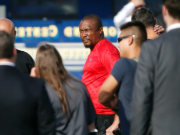Ukraine , Mar 29, 2025
In the latest chapter of the ongoing conflict in Ukraine, the country is bracing for a renewed Russian offensive. With tensions escalating, the situation on the ground is rapidly changing, and both military and political strategies are being recalibrated.
The Escalation of the Russian Offensive
As spring approaches, Russia has launched a series of attacks across multiple regions of Ukraine, intensifying the long-running conflict. This offensive comes after a brief period of reduced fighting and signals a shift in Russia’s military tactics. Ukrainian forces have been on high alert, and the government in Kyiv has issued calls for increased international support as the conflict enters its next phase.
The offensive has been characterized by heavy artillery strikes, air raids, and the deployment of specialized troops aimed at breaking Ukrainian defense lines. These actions follow a pattern of aggressive maneuvers intended to gain control over critical areas, especially in the east and south of Ukraine, where both countries are vying for strategic advantages.
Key Battles and Strategic Locations
The focus of the renewed offensive seems to be in the Donetsk and Luhansk regions, where Russia has made significant gains in previous months. The Ukrainian military is currently holding strong in certain parts of these territories, but experts warn that the Russian forces are continuously adapting their strategy.
One of the key battlefronts is the city of Bakhmut, which has seen some of the fiercest fighting since the start of the conflict. Its strategic location is vital for controlling supply routes and maintaining defensive positions in eastern Ukraine. Both sides are heavily invested in the outcome of this battle, making it a crucial point in the ongoing war.
International Reactions and Support for Ukraine
As Russia intensifies its offensive, Ukraine has called for more advanced weaponry and greater international backing. Western countries, particularly NATO members, have provided various forms of support, including military aid, intelligence, and economic assistance. However, Ukraine’s leaders continue to urge for quicker and more substantial deliveries of modern weapons to better equip their forces in the face of Russia’s increasing offensive capabilities.
The United States and European Union have also implemented additional sanctions on Russia, aiming to cripple its economy and limit its ability to continue the war. Meanwhile, diplomatic efforts are ongoing to find a resolution, though the prospects for peace remain uncertain as both sides continue to bolster their positions.
The Humanitarian Impact
The human toll of this renewed offensive is already being felt. Thousands of civilians are at risk, and many more have been displaced due to the ongoing conflict. Humanitarian organizations are struggling to provide aid, with infrastructure being destroyed in the wake of each attack. The war continues to exacerbate the humanitarian crisis in Ukraine, with an urgent need for global support.
Conclusion
The renewed Russian offensive represents a significant turning point in the ongoing war, with both military and political stakes rising higher than ever. As Ukraine faces this latest challenge, the international community’s response will play a crucial role in determining the outcome of this conflict and its global repercussions.













